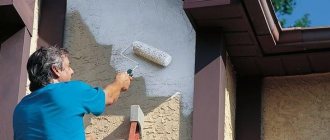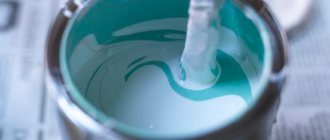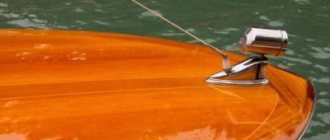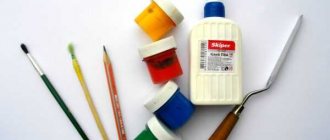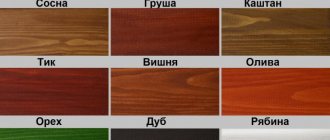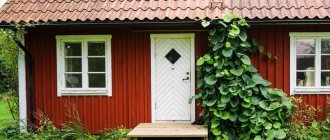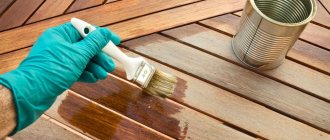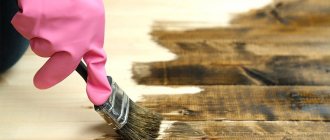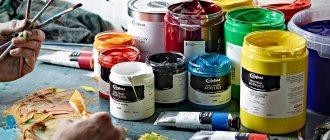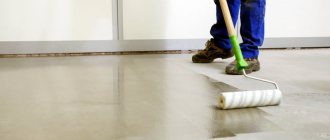Paints were invented quite a long time ago, but the process of obtaining them is constantly being improved, since many requirements are placed on their properties. This includes fire and environmental safety, as well as ease of use.
Acrylic paints are the most successful development for artistic and finishing works, since when working with them you get incomparable pleasure. They are easy to mix with each other, which allows you to get bright and rich colors. The range of shades is unusually wide, and this is important when creating complex color effects. Acrylic paints are used with pleasure by professionals, designers and just amateurs to create their masterpieces.
Acrylic paints dry very quickly, since their main element is ordinary water. Once the paint has dried, it becomes impervious to weathering, so it can be used for both external and internal work. You can paint everything with acrylic paints: paper, wood, metal, glass, concrete and anything your heart desires, even dried flowers, giving them a second life in the form of interior elements.
When sold, acrylic paints usually have a very thick consistency and, for ease of use, it is almost always diluted, as a result of which the coating is as smooth as possible. Acrylic paints are not diluted when creating various curls, flowers and other design elements on women’s nails. Here, the thickness of the paint helps create the volume of the applied pattern, making it more vibrant and beautiful.
Composition of acrylic paints
Paints consist of the following components:
- polyacrylates and acrylic resins, which form the basis of each layer and serve as film formers;
- surfactants, emulsifiers, stabilizers and fillers that increase the strength and wear resistance of the coating;
- organic and inorganic pigments that give color to the acrylic base;
- water, which is used as a solvent and liquid emulsion base.
Acrylic enamel, which is used for painting metal surfaces and car bodies, contains a large number of film formers. When dry, it forms a durable glossy coating that protects the metal from scratches and corrosion.
You can also get acquainted in more detail with the types of paints for cars, what acrylic paints are
Causes of drying out
The main reasons for acrylic paint drying out are:
- loose closure of the lid of a container with acrylic, violation of the integrity of the jar or tube;
- storage at high temperatures, under direct sunlight, etc.;
- using paint after the expiration date specified by the manufacturer;
- long-term painting, frequent opening of containers when working with the surface to be painted;
- evaporation of the solvent that was introduced to restore the paint under the influence of elevated temperatures.
The optimal consistency of the prepared paint is maintained only at a temperature of +15…+25°C. In cold weather, acrylic can become thicker, causing it to be applied in thick layers.
Tikkurila for interior and exterior work
Perhaps wood is one of the most popular materials that people use in construction. Moreover, the experience of working with him is simply enormous. Over all this time, the tree has proven itself to be the best in many respects. Some wooden houses have survived to this day, even though their age reaches up to 200 years.
And it’s not just about the technology of creating bathhouses, houses, utility rooms and other premises made of wood. The protection of these structures is also important. It's no secret that without proper protection, a tree will not last long. What exactly is such protection? This could be wood oil, wood impregnation, antiseptic or paint. They play an important role in the service life of the tree and its external features.
Nowadays, the Finnish company Tikkurila can be called a leader among manufacturers of paints and varnishes. For decades, the company has been producing paint and varnish products, constantly improving their properties. In this article we will look at the products of the Tikkurila company, find out the range of products for wood processing and their characteristics.
Difference between thinner and solvent
Thinners and solvents differ in the specific impact on acrylic resins and the purpose of addition.
Thinners are used for:
- short-term reduction in viscosity to facilitate application by brush, roller or spray gun;
- regulation of layer thickness and drying speed of the coating;
- restoration of the initial density of the composition.
Thinners do not react chemically with film formers, but only make the polymer base more liquid and fluid. When applied to a surface, they evaporate at a given rate.
Solvents act more aggressively on acrylic. They weaken the chemical bonds in the polymer, bonding the resins and converting them into a homogeneous liquid state. Aggressive substances allow you to restore dried or heavily thickened paint, but if used incorrectly, they can greatly deteriorate the quality of the coating.
Has dried out or become very thick
In order to move on, we must determine whether it has actually dried out or has become very thick. Thick acrylic paint is easily restored with water or a special thinner .
If the paint in a painting by numbers has frozen, it will be homogeneous in composition, similar to soft plasticine. It's tight, but you can take it with a brush. To give it its original coloring properties, add a couple of drops of water or thinner, mix thoroughly with a toothpick or the back of a brush and leave to “soak” for a couple of hours. Dose water depending on the degree of thickening.
If the paint has dried, you will not be able to pick it up with a brush. In appearance, it resembles a piece of plastic or rubber and is taken out of the jar in one piece. But all is not lost here either.
How to dilute acrylic paint
The classic thinner for acrylic is water. To get a high-quality product, you need to use a liquid with a minimum amount of impurities - bottled, settled or filtered. In cases where the paint has become very thick, use a mixture of water and alcohol.
Not all dyes allow dilution. Those into which liquid can be added must be marked accordingly. If the label is worn out or missing, you can dilute a portion of the material and test it on a small area of the surface to be painted.
The thinner should be poured in small portions, stirring thoroughly after each step. When using professional solutions, you can use a construction mixer: it will ensure uniformity of the composition, preventing the paint from hardening during mixing.
Features of diluting acrylic with water
The dilution proportion depends on the desired effect:
- 1:1 - has a good balance of viscosity and spreadability, forms a solid base for applying the final layer of a similar or thicker consistency.
- 1:2 (2 parts water) - suitable for creating a base coat, applied with a fluffy roller or sponge, leaving streaks when applied with a brush.
- 1:5 - used for tinting embossed surfaces, textured wallpaper and decorative elements; it is well absorbed and leaves a visible tint. A fivefold dilution of the dye is also used when priming porous coatings. The weakly saturated pigment penetrates deeply into the surface and replaces a special primer.
- 1:15 - applied with gradient coloring to create smooth, blurry transitions.
Compositions for painting and restoration are diluted in a minimal proportion (no more than 1:1). To obtain a rich color, water-dispersed dyes are mixed with water in a ratio of 9:1 (10% diluent).
Dilution with water and alcohol
If the paint has already thickened to the point of forming clots, then alcohol or vodka will be required for dilution. To soften lumps, you need to:
- prepare a small amount of alcohol, vodka or a 1:1 alcohol solution (when using compositions, you need to take into account the water content);
- pour into a jar with pigment, mix thoroughly;
- leave for a few minutes, stir again until the lumps disappear;
- if the composition needs to be applied immediately, then additionally filter it through gauze;
- Before sending a homogeneous emulsion for storage, pour a little solvent onto its surface and tightly close the lid of the container.
Door painting technology
An antique, beautifully restored wooden door attracts the eye and decorates the home. Many people get down to business themselves and restore and update valuable old doors with their own hands. Although the doors are not very large in size, restoration can take a significant amount of time.
However, with the help of quality materials and tools, as well as following the correct technique, you can achieve excellent results.
Preparing the door for painting
Careful preliminary surface preparation contributes to obtaining a high-quality final result. The old surface is washed and the peeling paint is removed.
Old layers of paint can be removed mechanically, for example with a scraper or sander.
Removing paint using a chemical method, such as paint stripper, does not require physical effort.
Maalinpoisto is an environmentally friendly paint remover as it does not contain methyl chloride or other halogen solvents.
The most common way to remove old paint is burning
Modern devices with infrared heating offer a flameless method of burning paint. There are two types of such devices. The first of them is intended for not very large surfaces, such as doors and windows, and has dimensions of 12x30 cm. The second is used to remove old layers of paint from large surfaces and has dimensions of 40x60 cm.
It takes approximately one hour to remove paint from a panel door.
If the paint is removed with a sanding machine, the individual parts and decorations of the paneled door pose difficulties. Grinding must be done in such a way that they are not deformed.
After removing the old layer of paint by sanding or burning, there is no need to dry the surface, and work can be continued immediately after this, however, with the chemical removal method, the surface must be rinsed with clean water and then left enough time for the surface to dry.
Primer and putty on the door before painting
After the paint is removed, the door must be inspected and repaired if necessary. Sand the clean wooden surface and remove sanding dust.
Before sealing uneven spots and cracks with putty, priming is done using alkyd primer Jehu or Otex, diluted 10-15% with white spirit.
The next day, the unevenness is sealed and leveled using putty, for example, Spakkeli alkyd putty or Spakkeli oil putty. The latter is a good alternative to harder alkyd or acrylic putties as it sands easier.
This quality is valuable when repairing a decorative door with rich ornamentation.
Spakkeli (Spakkeli) oil putty is applied with a spatula, and it is recommended to avoid applying too thick layers at a time. Next, an intermediate surface primer is performed.
Intermediate priming is done with undiluted alkyd primer Jehu, which, after drying, is sanded with fine sandpaper (No. 150-180). At this stage, it is recommended to carefully inspect the work using a halogen lamp, which illuminates the door from the side, simulating illumination by sunlight.
If necessary, the last small irregularities are leveled with putty, after which the putty areas are primed and sanded.
Door painting
The final painting is carried out in 1-2 layers of alkyd paint Maalarin (Maalarin Valkolakka), furniture paint Empire (Empire) or paint Karat (Karat). Maalarin Valkolakka paint is offered in glossy and semi-matte versions, Empire in semi-matte, and Karat in semi-gloss.
All of them are designed for painting doors, window frames and furniture and have the necessary thixotropy and self-leveling. The quick drying of Helmi acrylate paint requires more professionalism, but Helmi is a color-fast, water-based, environmentally friendly material that does not emit harmful substances into the environment and does not smell.
Door painting tools
Painting regular solid doors is not a problem, but paneled doors are much more difficult to paint. Large surfaces that cannot be painted completely before the paint dries can be divided into several sections.
It is recommended to apply paint to solid doors with a terry roller, after which the surface is further straightened with a wide brush.
It is worth paying special attention to high-quality tools. When painting or varnishing a regular, flat, solid door, we recommend using a mohair roller or some other short-haired roller. For example, an 18 cm roller with a pile length of 4 mm or a felt roller with a pile length of 5 mm are suitable.
The purpose of using a roller is to quickly apply a sufficient amount of paint or varnish to the surface, which is immediately smoothed over with a flat brush (150 mm). Door frames and narrow surfaces on the sides are painted with a normal size varnish brush, for example 70 mm.
To paint doors, high-quality varnish brushes made of natural or synthetic bristles are used. Using a brush with beveled bristles gives a slightly smoother surface. Natural bristles are not a good solution for water-based materials. To apply Helmi, for example, we recommend a synthetic brush.
When painting paneled doors, the following rule is observed: first the mirrors are painted, then the horizontal and, finally, the vertical elements.
In repair painting of doors, spraying is rarely used, especially in apartments where people usually live during painting and there is furniture nearby.
With the help of decorative painting, an ordinary door can be turned into a paneled one.
On a dry surface, masking tape is used to limit the areas to be decorated. They are sanded with fine sandpaper and then decoratively painted with Helmi or Empire tinted paints.
When painting panel doors, it is recommended to paint the solid surfaces of the door first. Excess paint spilled through the panels is removed with a wet cloth. Drawing lines with adhesive tape also makes the job easier.
In conclusion, it can be said that a good restoration and painting of a door takes a lot of time, but a masterfully restored door deserves this attention.
Beautiful doors are an important element that emphasizes the style of the interior.
Types of solvents for acrylic paints
Alcohols, esters and hydrocarbons (petroleum distillation products) can be used as solvents for acrylic paints.
Solvents are classified into several types:
- Slow (heavy) - Body 741, Body 742. They are made from substances with a high boiling point, so the drying rate of the coating after their addition is reduced. Slow solvents prevent roughness and provide good flow, which is necessary for a glossy finish. If painting work is carried out at elevated temperatures (above +25°C) and low humidity, then the use of heavy additives for acrylic is mandatory. They are also used when painting a large surface of a car.
- Medium (universal) - P-12, Body 740. Solvents of this type are suitable for external and internal work under normal conditions (+15...+25°C, humidity 50-80%).
- Fast (light) - R-5, alcohols, solvents. Solvents with the highest evaporation rates are used at lower temperatures. They provide quick adhesion to the base layer, prevent the formation of streaks and dust settling on the drying coating. When working with a spray gun, the particles of the mixture with a fast solvent harden before contacting the surface, so the strength of the coating decreases. Light additives are used mainly when painting small parts.
solvents for acrylic paints
The most common in the construction and auto repair industry are complex solvents: R-4, R-5, R-12, etc. They include toluene, acetone, butyl acetate, xylene, ethylcellosol, solvent, cyclohexanone and alcohols.
They are used to control the flow of acrylic enamels, paints and varnishes. For example, P-5 is suitable for painting and most types of coatings, while P-12 is used primarily for painting cars.
In the artistic environment, acrylic thinners are more often used - Tamiya, Khimik, etc.
How to dilute acrylic paint if it has dried
If the paint has dried and hardened, it will become impossible to soak it with water. To restore the consistency of acrylic you need:
- Remove the dry agglomerate, grind and grind it into powder.
- Pour dispersed pigment with 1 part boiling water and stir thoroughly. After the water has cooled, pass the diluted emulsion through 2-3 layers of gauze.
- Repeat dilution with warm water until the desired consistency is obtained.
The hot method negatively affects the quality of the paint. If the original mixture is intended for painting, restoration or other artistic purposes, it should be restored with special solvents.
Boiling water can be replaced with medical or isopropyl alcohol. In this case, the solvent does not need to be heated, and the paint lumps do not need to be thoroughly crushed.
Isopropyl alcohol is included in professional acrylic thinners, so it is suitable for achieving the desired thickness of paint. Experienced modelers and artists recommend using a mixture of isopropyl alcohol and glycerin (the proportion is 25 ml per 1 liter of alcohol).
Glycerin slows down the evaporation of the solvent, which avoids roughness (shagreen) and improves the spreading of acrylic.
Products for household use
Ultra Talomaali acrylate based paint. It is resistant to rain, temperature changes, high humidity and ultraviolet rays. Used for wood processing. The finished coating is semi-matte. Over the years it has not lost its appearance. Consumption of the composition is 1 liter per 4-6 m2 for sawn wood, and 1 liter per 7-9 m2 for smooth-planed wood. Needs to be diluted with water. The series of paints includes two more varieties: Ultra Classic and Mat. They differ in the degree of their shine.
Tikkuril façade azure Valtti Akvacolor. A mixture diluted with water, based on natural oil. Used for treating external surfaces. Being impregnated with this composition, the wooden surface is protected from external negative influences. It is used to treat wooden walls and fences. Can be applied using a brush or spray gun. Consumption - 1 liter per 4-12 m2 (the indicator depends on the smoothness of the surface).
Facade glaze Valtti Color. It is also made on an oil basis and has similar characteristics as the azure above. Only its advantage is that the composition can be tinted in more than 40 shades. Any external surfaces can be painted with azure. Consumption of the composition is 1 liter per 4-12 m2.
Oil paint Teho on an alkyd basis. It can be tinted in different shades. Ideal for painting wooden facades and other external surfaces. Apply with a brush. The composition dries in 24 hours, and the consumption is 6-11 m 2 / l. It can be diluted using Valtti primer, white spirit or alkyd solvent. There is another type of paint, Teho Ikkunamaali, which is intended for painting door or window frames. Sold in two versions: A and C. The differences are that the first option is used without tinting, and the second only tinted.
As you can see, you have a ton of options for products you can use on your wood. And if you only need to protect the surface, then use antiseptics, varnishes and primers from Tikkurila.
How to prevent paint from drying out
To avoid acrylic drying out in a jar or tube, you need to tightly close the lid of the container. For construction work, dye is often purchased with a reserve in order to be able to restore the damaged coating with an exact match of the shade.
The mixture can be stored in a pantry, warm garage, basement and other rooms. Before closing, it is necessary to thoroughly wipe the lid and neck of the jar from the coloring composition.
From time to time it is necessary to check the expiration date of paint in closed cans and its consistency in open ones. If the acrylic has thickened, you need to immediately restore it with water before the polymer base becomes dry.
When painting large surfaces, dilute the paint in portions and cover the jar tightly with a lid. To paint the car evenly, you need to slightly dilute the dye before applying the second coat. Due to the active evaporation of solvents, acrylic enamel has time to thicken while the master applies the first layer of coating.
The quality of restored dry paint is significantly reduced, so it is advisable to revive the polymer emulsion before it dries completely. To make working with the composition easier, you can use both thinners and solvents. The former allow you to adjust the consistency, while the latter bind the acrylic and speed up the curing of the finished coating.
Additional recommendations
Working with acrylic paints has nuances and secrets. Here are some of them:
The water must stand for 2-3 hours so that the impurities settle to the bottom. Only after this can it be used to dilute acrylic paints.
When applying the composition using a spray gun, work with branded solvents, adhering to the proportions recommended by the manufacturer. This way you will get a liquid of uniform consistency and achieve uniform coloring of the surface.
Rinse brushes and rollers thoroughly, especially if the work was performed with a highly diluted liquid. This composition is difficult to notice, so the particles remain between the villi. If you subsequently use paint of a lighter shade, the color will be spoiled.
Add the diluent to the composition in portions, thoroughly mixing the composition after each dose. To do this, use a special mixer.
It is not recommended to purchase the material “back to back” - it is advisable to leave a small amount of paint unused. This is necessary for spot restoration of the surface in case of accidental damage.
Regardless of what you choose to thin your acrylic paint with, test the product with a small amount of colorant. If you notice the formation of lumps, you will have to choose another option.
